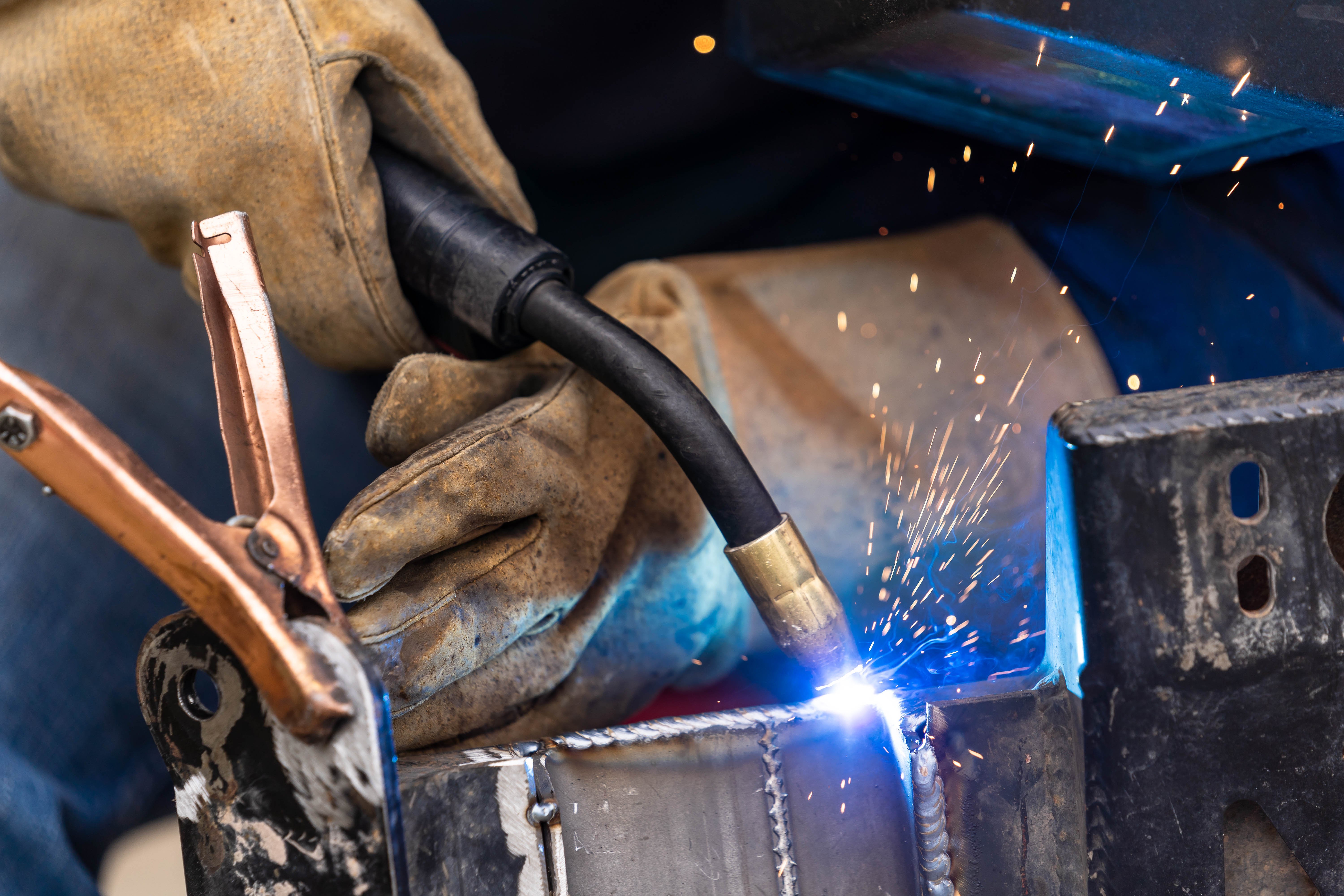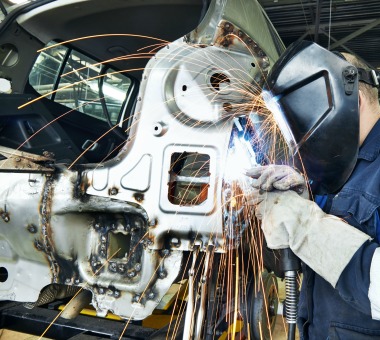All Regarding Welding: Key Insights Into Techniques and Best Practices for Success
Welding includes a selection of strategies, each matched for certain products and applications. Understanding these techniques, such as GMAW, SMAW, and TIG, is necessary for achieving perfect outcomes. In addition, the appropriate tools and security techniques can not be neglected. As prep work and troubleshooting play critical functions in the welding process, mastering these components can significantly improve the high quality of the last item. What are the essential aspects that ensure an effective weld?
Understanding Various Welding Methods
Welding techniques include a variety of techniques, each fit to certain applications and materials. Among one of the most common techniques are Gas Metal Arc Welding (GMAW), Shielded Metal Arc Welding (SMAW), and Tungsten Inert Gas Welding (TIG) GMAW, likewise understood as MIG welding, is preferred for its speed and versatility, making it perfect for thin products. SMAW, or stick welding, is favored for its simpleness and performance in outdoor environments, particularly with thicker metals. TIG welding provides accuracy and control, making it ideal for complex job and non-ferrous steels (Belgrade). Each technique has its unique advantages and factors to consider, permitting welders to choose the most effective technique based upon the job's requirements, product type, and desired results. Understanding these techniques is crucial for effective welding
Necessary Welding Equipment and Tools
While different welding strategies call for details skills, the right equipment and devices are similarly important for attaining high quality outcomes. Important welding tools consists of welding equipments, which differ depending upon the strategy-- such as MIG, TIG, or stick welding. Safety gear, including aprons, handwear covers, and safety helmets, guarantees safety and convenience throughout the process. In addition, clamps and components assist protect materials in position, guaranteeing precision in welds. Consumables like welding poles, wire, and securing gas are additionally crucial parts that affect the high quality of the weld. Devices such as cutters and grinders assist in surface preparation and post-weld ending up, contributing to a specialist result. Buying top quality tools ultimately enhances the efficiency and effectiveness of welding projects.
Safety And Security Practices in Welding
Correct security practices are essential in the welding sector to shield workers from possible dangers. Welders need to wear proper personal safety tools (PPE), consisting of helmets with proper shading, gloves, and flame-resistant apparel. Appropriate air flow is vital to reduce direct exposure to damaging fumes and gases produced during the welding procedure. Furthermore, employees should be learnt the proper handling of welding tools to stop mishaps. Fire precaution, such as keeping flammable products away from the welding location and having fire extinguishers easily offered, are required. Normal inspections of equipment and workspaces can help recognize potential threats before they result in crashes. By adhering to these safety methods, welders can create a safer working environment and reduce dangers related to their trade.
Preparing Materials for Welding
Preparing materials for welding is an essential action that significantly affects the top quality and stability of the last item (Montana Mobile Welding and Repair Fabrication). Correct preparation involves cleansing the surface areas to remove contaminants such as rust, oil, and dirt, which can endanger the weld. Methods such as grinding, sanding, or utilizing solvents are frequently used to achieve a tidy surface. Furthermore, ensuring that the materials fit together well is important; spaces can lead to weak welds. It's also essential to take right into account the placement and positioning of the elements, as this will affect the ease of welding and the last end result. Lastly, choosing the appropriate filler product and making sure compatibility with the base metals is essential for accomplishing solid, resilient welds
Tips for Achieving High-Quality Welds
Accomplishing high-grade welds needs interest to detail and adherence to ideal techniques throughout the welding process. Correct joint preparation is crucial, making sure surfaces are clean and free from impurities. Choosing the appropriate filler material and welding strategy based upon the base metals is critical for ideal bonding. Preserving constant traveling speed and angle while welding can avoid issues and promote harmony. In addition, regulating heat input is important; extreme warmth can result in bending and weakened joints. If essential, consistently checking the welds throughout the process permits for prompt adjustments. Finally, utilizing ideal post-weld therapies, such as cleansing and stress relief, can improve the resilience and stability of the weld, eventually making sure an effective end result.
Repairing Common Welding Issues
Welding often offers difficulties that can impact the quality and stability of the end product. Typical problems such as porosity, inconsistent weld grains, and overheating can arise, each needing particular troubleshooting methods. Comprehending these issues is important for welders to visit homepage boost their skills and attain perfect results.
Porosity Troubles Described
Although porosity can usually be neglected, it continues to be a critical concern in welding that can endanger the honesty of a completed item. Porosity refers to the visibility of small gas pockets within the weld grain, which can damage the joint and lead to premature failure. This problem usually develops from impurities, moisture, or improper securing gas insurance coverage throughout the welding procedure. To mitigate porosity, welders ought to verify that the base products are tidy and dry, make use of ideal shielding gases, and keep regular welding specifications. Routinely evaluating the tools and atmosphere can additionally assist recognize potential concerns before they show up in the weld. Dealing with porosity successfully is crucial for attaining solid, sturdy welds that meet quality standards.

Inconsistent Weld Beans
Inconsistent weld beads can significantly affect the quality and strength of a finished item. Numerous elements add to this problem, consisting of inappropriate traveling speed, incorrect amperage setups, and irregular electrode angles. When the welder relocates too swiftly, a bead might appear narrow and do not have infiltration, while moving too slowly can cause excessive buildup. Furthermore, making use of the incorrect amperage can lead to either undercutting or too much spatter, both of which concession weld integrity. The welder's technique, such as inconsistent lantern movement, can likewise bring about uneven grain look. To alleviate these troubles, welders ought to concentrate on maintaining constant, regulated activities and making certain correct tools setups to accomplish harmony in their welds. Uniformity is crucial to attaining strong and reliable welds.
Getting Too Hot and Bending Issues
Excessive official site warm throughout the welding process can cause significant getting too hot and contorting issues, affecting the architectural integrity of the work surface. These issues usually manifest as distortion, which can jeopardize alignment and fit-up, making further setting up testing. Variables adding to overheating consist of the option of welding criteria, such as voltage and travel rate, in addition to the sort of material being welded. To mitigate these issues, welders should keep constant travel rate and suitable warm input while keeping track of mma welding the workpiece temperature level. Furthermore, preheating or post-weld warm treatment can help ease anxieties triggered by rapid cooling - Montana Mobile Welding and Repair Welding. Routine evaluation and adherence to finest practices are important in avoiding getting too hot and guaranteeing the long life and reliability of welded frameworks
Often Asked Inquiries
What Are the Profession Opportunities in the Welding Sector?
The welding market uses diverse occupation possibilities, including positions as welders, engineers, instructors, and inspectors. Specialists can work in manufacturing, building and construction, aerospace, and auto markets, gaining from solid need and competitive salaries in numerous functions.
Just How Can I Enhance My Welding Speed Without Giving Up High Quality?
To improve welding speed without giving up top quality, one should practice effective strategies, maintain devices, enhance settings, and boost hand-eye sychronisation. Normal training and seeking feedback can likewise considerably add to accomplishing faster, high-grade welds.
What Qualifications Are Readily Available for Welders?
Numerous accreditations exist for welders, including those from the American Welding Culture (AWS), the National Facility for Building Education And Learning and Study (NCCER), and various industry-specific organizations. These credentials improve employability and demonstrate skill efficiency.
Just How Does Welding Affect the Residences of Metals?
Welding influences the residential properties of steels by modifying their microstructure, which can result in modifications in solidity, ductility, and toughness. Heat input and air conditioning prices during the process significantly affect these material qualities.
Can I Bonded Dissimilar Metals With Each Other?
